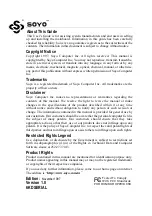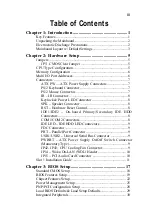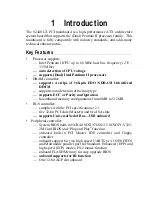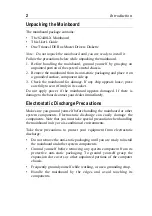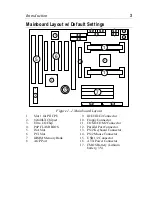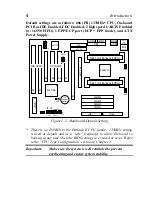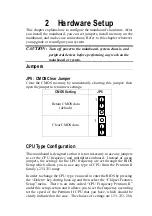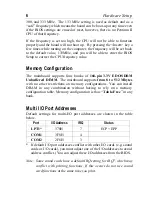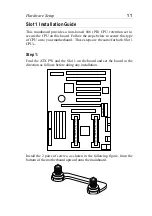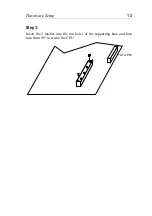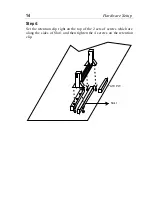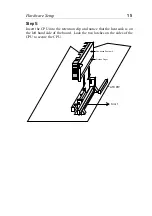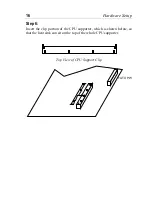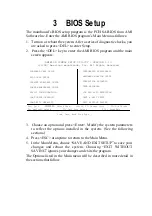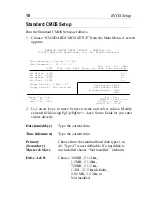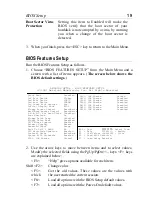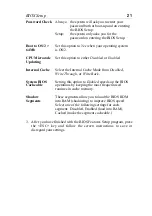
6
Hardware Setup
300, and 333 MHz. The 133 MHz setting is used as default and as a
ÒsafeÓ frequency which means the board can be boot-up at any time even
if the BIOS settings are erased or reset, however, there is no Pentium II
CPU of that frequency.
If the frequency is set too high, the CPU will not be able to function
properly and the board will not boot up. By pressing the <Insert> key a
few times while turning on the computer, the frequency will be set back
to the default value, 133MHz, and you will be able to enter the BIOS
Setup to correct the CPU frequency value.
Memory Configuration
The mainboard supports four banks of
168-pin 3.3V EDO/SDRM
Unbuffered DIMM
. The mainboard supports
from 8 to 512 Mbytes
with no other restrictions on memory configurations. You can install
DRAM in any combination without having to rely on a memory
configuration table. Memory configuration is thus Ò
Table-Free
Ó in any
bank.
Multi I/O Port Addresses
Default settings for multi-I/O port addresses are shown in the table
below.
Port
I/O Address
IRQ
Status
LPT1*
378H
7
ECP + EPP
COM1
3F8H
4
COM2
2F8H
3
* If default I/O port addresses conflict with other I/O cards (e.g. sound
cards or I/O cards), you must adjust one of the I/O addresses to avoid
address conflict. (You can adjust these I/O addresses from the BIOS.
Note: Some sound cards have a default IRQ setting for IRQ7, which may
conflict with printing functions. If this occurs do not use sound
card functions at the same time you print.


